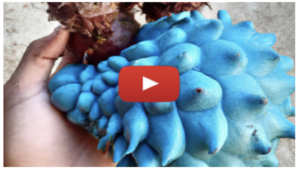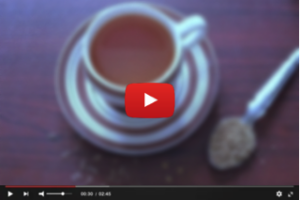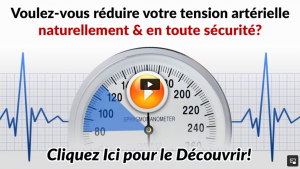The #1 Rated Blood Sugar Formula
The Connection Between Pregnancy Induced Hypertension and Preeclampsia

Getting to Know Pregnancy Induced Hypertension
Pregnancy is an incredible journey, but let's face it, it can throw a few curveballs. One of those unexpected hiccups is pregnancy induced hypertension (PIH). It's something that deserves attention since it affects around 5-8% of pregnancies, making it a key concern for moms-to-be.
What Exactly is PIH?
PIH is basically high blood pressure that shows up after 20 weeks of pregnancy in women who previously had normal blood pressure. It can vary in form, like gestational hypertension, preeclampsia, or even eclampsia, each with its own level of severity. Spotting and handling PIH is crucial for a healthy pregnancy.
Spotting Symptoms and Diagnosing PIH
Hypertension during pregnancy can be sneaky, often flying under the radar due to its subtle symptoms. Look out for persistent headaches, blurry vision, or swelling in the hands and face. Regular prenatal visits are a must for catching PIH early, as they involve keeping a close eye on blood pressure.
Why Keeping Tabs on Blood Pressure Matters
Keeping track of your blood pressure is a big part of prenatal care. It helps catch hypertension early, preventing potential hiccups down the road. Regular check-ins mean healthcare providers can manage blood pressure effectively, minimizing risks for both mom and baby. Early action is key in managing PIH and ensuring a safe pregnancy.
Delving into Preeclampsia
What's the Deal with Preeclampsia?
Preeclampsia is a more serious twist on pregnancy induced hypertension, bringing along some serious risks. It's marked by high blood pressure and often involves damage to organs like the liver and kidneys. This condition usually pops up after the 20th week and can impact both mom and the little one.
Spotting Preeclampsia Symptoms
Knowing the signs of preeclampsia is crucial for stepping in at the right time. Watch for severe headaches, vision changes, upper belly pain, and high protein levels in urine. If you notice these symptoms, it's crucial to seek medical help promptly to avoid further complications.
Who's at Risk for Preeclampsia?
There are certain risk factors that make preeclampsia more likely. These include a history of high blood pressure, being over 35, obesity, and carrying twins or more. A family history of preeclampsia or conditions like diabetes can also up the risk. Spotting these factors helps tailor a personalized care plan during pregnancy.
Linking PIH and Preeclampsia
How Hypertension Can Lead to Preeclampsia
PIH can morph into preeclampsia if not managed well. While the exact cause isn't fully pinned down, it's thought to involve abnormal blood vessel development in the placenta. This leads to poor blood flow, triggering high blood pressure and other preeclampsia-related issues.
Shared Risk Factors
PIH and preeclampsia share some common risk factors like first-time pregnancies, older maternal age, and pre-existing health issues. Knowing these shared factors helps in identifying who might be more at risk and putting preventive steps in place. Lifestyle tweaks and regular check-ups can lower the chances of these complications.
Potential Complications for Mom and Baby
The complications tied to PIH and preeclampsia can be serious, impacting both mom and baby. For moms, there's the risk of stroke, organ damage, and severe bleeding. Babies might face growth issues, premature birth, or, in severe cases, stillbirth. Proactive management and intervention are crucial to keeping these risks at bay.
What Causes PIH?
Genetic and Environmental Factors
Both genetic and environmental factors play a role in PIH. A family history of high blood pressure can up the risk, as can stressors like poor diet and lack of exercise. Understanding these influences helps in crafting targeted strategies to prevent and manage hypertension during pregnancy.
Lifestyle and Health Considerations
Lifestyle choices like diet, exercise, and stress levels have a big impact on PIH risk. Eating well, staying active, and managing stress can lower the risk. It's wise for expecting moms to consult healthcare pros to tailor a safe and effective lifestyle plan.
Age and Medical History
Age and medical history are key in assessing PIH risk. Women over 35 or with a history of chronic hypertension or kidney issues are more susceptible. Keeping a close watch on these individuals during pregnancy can help catch any early signs of hypertension and allow for timely interventions.
Diagnosis and Keeping an Eye on Things
Prenatal Visits and Blood Pressure Checks
Regular prenatal check-ups are the backbone of managing PIH effectively. These visits include blood pressure monitoring to catch any spikes early. Tracking blood pressure changes lets healthcare providers step in with interventions, reducing the risk of more serious conditions like preeclampsia.
Diagnostic Tests and Procedures
Alongside blood pressure checks, tests like urine analysis and blood tests help assess protein levels in urine and kidney function. These tests confirm a PIH diagnosis and its severity, guiding the creation of a treatment plan.
The Perks of Early Detection
Early detection of PIH is crucial in heading off complications for both mom and baby. It allows healthcare providers to step in with lifestyle changes, medication, or other treatments as needed. Catching PIH early improves the chances of managing it well and ensuring a healthy pregnancy.
Managing and Treating PIH
Making Lifestyle Tweaks and Watching Your Diet
Managing PIH often starts with lifestyle tweaks. A balanced diet packed with fruits, veggies, and whole grains, along with regular exercise, can help control blood pressure. Cutting down on salt and keeping a healthy weight are also key steps in managing PIH effectively.
Medication and Medical Interventions
If lifestyle changes aren't enough, medication might be needed to manage PIH. Antihypertensive drugs can help keep blood pressure in check, reducing the risk of complications. Sometimes, hospitalization might be necessary to closely monitor mom and baby, especially if severe symptoms crop up.
The Importance of Regular Prenatal Care
Regular prenatal care is essential for managing PIH. These visits let healthcare providers keep track of blood pressure, check the baby's growth and development, and tweak treatment plans as necessary. Consistent prenatal care is vital for ensuring a safe and healthy pregnancy for both mom and child.
Preventive Steps and Tips
Making Healthy Lifestyle Choices
Adopting a healthy lifestyle is one of the best ways to ward off PIH. This means eating a balanced diet, staying active, and steering clear of harmful substances like tobacco and alcohol. These choices not only lower the risk of PIH but also boost overall well-being during pregnancy.
Stress-Busting Techniques
Managing stress is another key part of PIH prevention. Techniques like yoga, meditation, and deep breathing can help keep stress levels in check. Making time for relaxation and self-care can also positively impact blood pressure and overall health during pregnancy.
Why Regular Medical Check-ins Matter
Regular medical check-ins are critical for preventing and managing PIH. These visits offer a chance to discuss concerns, get personalized advice, and undergo necessary screenings. Staying in close touch with healthcare providers ensures timely interventions and top-notch care for expecting moms.
Wrapping Up and Looking Ahead
Key Takeaways
Pregnancy induced hypertension is a big health concern that needs careful watching and managing. Understanding its link to preeclampsia, recognizing risk factors, and taking preventive measures are key to a healthy pregnancy. Early detection and regular prenatal care are crucial in managing this condition effectively.
New Research and Treatment Options
Ongoing research is helping us learn more about PIH and preeclampsia. Advances in diagnosis and treatment offer hope for better management and outcomes. Staying up-to-date with the latest developments empowers expecting moms to make informed decisions about their health.
Where to Find More Information
For more on pregnancy induced hypertension and preeclampsia, reputable resources like the American College of Obstetricians and Gynecologists and the Preeclampsia Foundation offer valuable insights and support. Reaching out to these organizations can provide further guidance and help for expectant mothers navigating these conditions.

Maja Kowalczyk is a health enthusiast and has been interested in healthy and natural methods of regulating blood pressure for many years.










